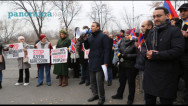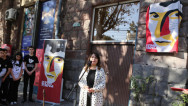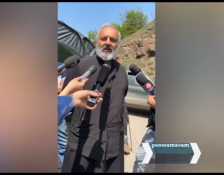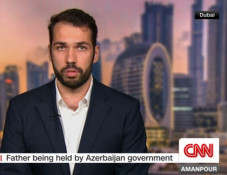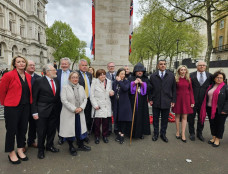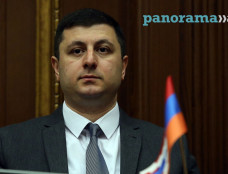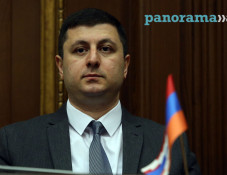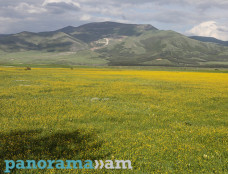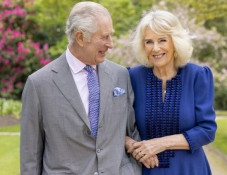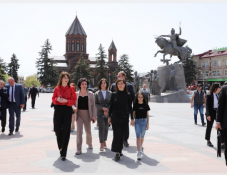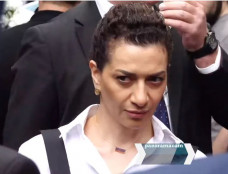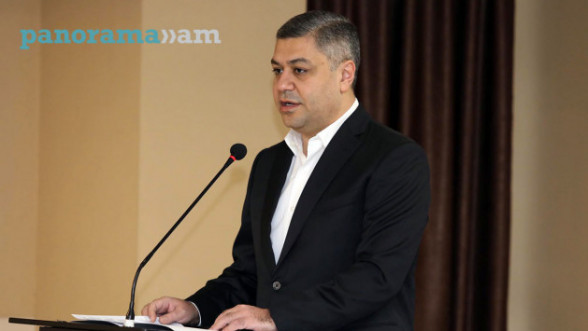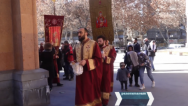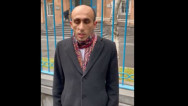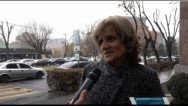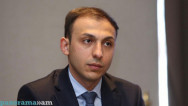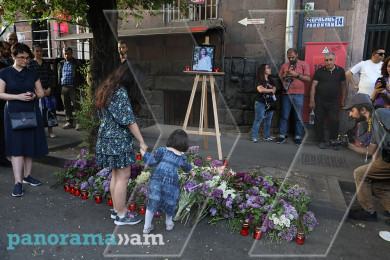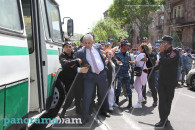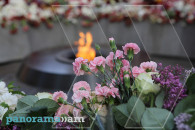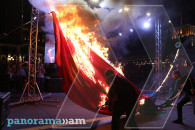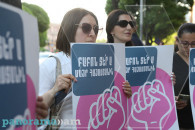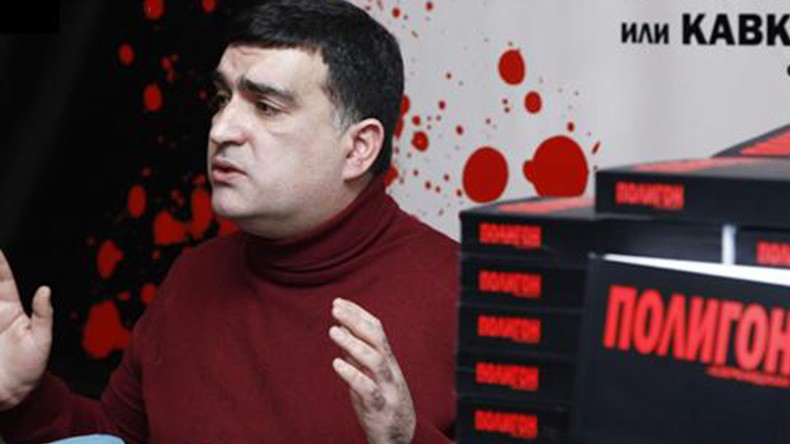
Aris Ghazinyan: Timur took thousands of Armenians out of Armenia to develop crafts and trade in his empire
The 14th century was one of the most tragic ones in the Armenian history: one after another many cities, including Ani and Dvin, the greatest ever founded by the Armenians, stepped down the stage in the all-absorbing whirl of successive shocks. Armenian journalist and researcher Aris Ghazinyan writes about it in his book “Yerevan: with a cross or on the cross,” which is an attempt of setting and considering an extremely diverse range of processes directly or indirectly forming the character of the development of the territory in question and predetermining the inevitability of turning Yerevan into the main center of the Eastern Armenia, and later on into the capital of the recovered Armenian state.
Yerevan was destined to survive in that wild whirl of people in the history: maybe that is the reason why it soon became the main political center of the Western Armenia. It is impossible to underestimate the significance of that sacral place. Ghazinyan writes that it demonstrated a tremendous immunity at all times, and the inhabitants always expressed willingness and ability to protect their right to live in their native land.
“At the same time, the 14th century was a period of decay of a number of states, including the Ilkhan Empire and the Sultanate of Rum. In the subsoil of the latter, the clan of Kayi leader Ertogul gradually strengthened, and his son Osman would soon become the founder of one of the world empires. The Hulagu Ilkhanate also broke up into independent khanates, and the leader of each of them was a representative of this or that generation,” the author writes.
Yerevan fell under the influence of the Chupanid family, which derived from the turkified Mongolian tribe Soldus. Once the ancestor of the Chupanids, Tayichiud smith Sorqan-Shira helped the young Temujin Genghis khan to escape from the Tayichiud tribe, and provided his descendants with high positions in the Ilkhan State.
At that time, another Mongolian ulus Chagatai was breaking up in the East; Timur, a twenty-two-year-old ataman, moved forward on to the first positions, and his military campaigns emptied the whole region in the eighties and nineties of the 14th century.
“Oh, what a disaster and bitter sadness! <…> fear and horror as at the Last Judgment. Cry and sobbing sounded throughout the entire fortress, as the order of that tyrant followed: take all women and children captive, and to throw others from the walls of the fortress, whether they are believers (Christians) or non-believers (non-Christians). And the order was immediately carried out. They started to throw down everyone, and the corpses rose so high that the last ones to be thrown did not die already <…> But who can tell about the number of the prisoners and innocently killed! Only God, who created everything. And the whole country was filled with captive Armenians,” Thomas of Metsoph, who describes the destruction of the Armenian city Van, writes as cited by Ghazinyan, who adds that Yerevan was not an exception, too.
After spending the winter in Karabakh, Timur moved to the Ararat plain fully ruining it. Hundreds of inhabitants fell victim to his second invasion to Yerevan. Armenian poet and narrator of the 14th-15th centuries Grigor Khlatetsi (Tserents) writes about it, “He tore five hundred Armenians to pieces in the big avan Yerevan. The scribe has nothing to add, there is no future for the Christians.”
He described the second invasion in the “Colophons of disasters:” “In 836 of the Armenian chronology, the nasty man called Tamerlane appeared <…> If someone resisted them with his impregnable castle, they soon arrived there, surrounded him as a locust, shouted, exclaimed, howled, growled, bellowed, barked, moaned, beat drums, blew trumpets, adjusted bows, showered with arrows, threw stones, tossed blgikhons from catapults, completely destroyed, dug holes, entirely ruined thousand-year-old constructions in a day.”
Timur took thousands of Armenians to Samarkand for improving his empire’s capital city and for developing different crafts and trade on its territory. Ruy González de Clavijo, an envoy of the Spanish king, a diplomat and traveler, mentions about it as an eyewitness. Significantly, priest Karapet Jugaetsi was also driven to Samarkand together with armorers and jewelers, merchants and stonemasons, Ghazinyan writes.
“Another important nuance: though Turkic tribe groups settled in the region expressed specific ambitions earlier too, it was after Timur’s conquests, in other words, after the depletion of huge territories and desolation of cities, that they first felt as the owners of not only encampments, but also plains,” Ghazinyan writes noting that Timur’s influence on the demographic indices of the enslaved lands, allocation prospects, and the population’s ethnic structure was enormous.
It was reflected not only in the systematic expulsion of the citizens and in the depletion of the urbanized regions, but also in the resettlement of tens of thousands Turkic families to the new territories. An incalculable quantity of jurts was set up in Yerevan, as well as in other regions of Armenia and Caucasian Albania.
In the beginning of the 19th century, A. Bakikhanov noted, “He settled fifty thousand families brought by Timur <…> mainly descendants of the Turks, who were moved to Persia by Hulagu khan, <…> in Karabakh, Ganja, and Erivan <…> Most of the wandering tribes in the aforementioned provinces are their descendants.”
“The appearance of all those tribes in one of the most ancient centers of cultural assimilation became a real challenge to civilization. The Byzantine Empire could not resist the Kayi clan and signed under its own failure in the middle of the 15th century. The disappearance from the world map of once the most powerful Orthodox empires, which once adapted that map and inserted corrections in it at its own discretion, became the greatest event in the world history,” the author writes.
Big Turkic tribe unions were dispersed and divided into many little parts. For example, the Oguzes consisted of dozens of separate tribes (Bayat, Cavuldur, Yazir, Doger, Yaparli, Afshar, Buzuk, Uchuk, and others), and some of them, like Kinik, Kay, Salur, could found ruling dynasties: the Seljuq, Ottoman and Karamanid respectively.
The main question presented by the 15th century to the Armenians was the following: should the Armenian City exist or not? After all, the urban life of the Armenians developed also outside the country, whereas an alien element – Turkic and turkified Mongolian – was intensively produced in the country. Tribes of nomads spread practically everywhere, city blockages were used as shelters and stalls, thousand-year temples – as comfortable cattle sheds, Ghazinyan writes.
To be continued
Aris Ghazinyan’s “Yerevan: with a cross or on the cross” is a book about the social and political history of Yerevan and Yerevan district (as a habitat) since the declaration of Christianity to the beginning of XIX century. In addition to demonstrating historical facts based on archive documents and sources, the book also considers the fundamental theses of the Azerbaijani historiography and Pan-Turkic ideology aimed at appropriating the historical, cultural, and spiritual heritage of the Armenians and other nations of the region by falsifying their history.
Related news
- Aris Ghazinyan: Yerevan became place of pilgrimage for Christians since late 13th century
- Aris Ghazinyan: Average seventh-century inhabitant of Yerevan embodied collective image of the Armenian of that time
Newsfeed
Videos



